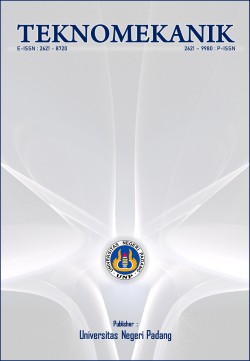Planning of the digitalization promotion system at the Colo Muria tourist site in Kudus Regency
DOI:
https://doi.org/10.24036/jptk.v4i3.21023Keywords:
System digitization, Promotion tourism, Augmented reality, Android ofAgile developmentAbstract
Tourism is a multidimensional activity that can show the identity of tourist attractions, one of which is the Colo Muria Tourism object which has local charm and wisdom that can be visited by tourists. This study aims to plan a digitalization system at the Colo Muria tourist attraction, Kudus Regency using Augmented Reality technology. The research method used is agile development. The steps of this research are Planning, Analysis, Design, Implementation, and Testing. Application testing using alpha testing in the form of functional testing (black box testing), portability testing and beta testing in the form of usability testing (media expert tests and application user observer tests). The alpha test that tested the functionality aspect using the black box test showed that the application was running well and as planned. Beta testing was carried out by media experts and the percentage results were 80%. From these results, it can be seen that the digitization system at the Colo Muria tourist attraction has good capabilities, so it can be declared worthy of being used as a means of tourism promotion. For beta testing using the respondent test, the final average score is 79%, so it is included in the acceptable or feasible criteria for use. Suggestions put forward for further research are to add better-animated travel videos and 3D object animations so that the Colo Muria tourism object digitization system is more complete.
Downloads
References
Azuma, Ronald T. (1997). A Survey of Augmented Reality. Presence: Teleoperators and Virtual Environments 6 (4): 2,356.
Chung, N., Han, H. & Joun, Y. (2015). Tourists’ intention to visit destination: Role of augmented reality applications for heritage site. Computers in Human Behavior.
Hari F, Diansari O. (2018). Pemanfaatan Augmented Reality Untuk Pengenalan Landmark Pariwisata Kota Surakarta. 12(1):7-10.
Prabowo, R., Listyorini, T., & Jazuli, A. (2015). Pengenalan Rumah Adat Indonesia Berbasis Augmented Reality Dengan Memanfaatkan KTP Sebagai Marker. Prosiding SNATIF, 2(2), 51–58. https://doi.org/10.1145/2656433
Pressman, R. S., & Maxim, B. R. 2015. Software Engineering: A Practitioner’s Approach, Eighth Edition. ACM SIGSOFT Software Engineering Notes. https://doi.org/10.1145/1226816.1226822
R. A. Setyawan dan A. Dzikri. (2016). Analisis Penggunaan Metode Marker Tracking Pada Augmented Reality Alat Musik Tradisional Jawa Tengah,” Simetris J. Tek. Mesin, Elektro dan Ilmu Komputer., vol. 7, no. 1, p. 295.
Rifa’il, Muhammad, dkk. (2014). Penerapan Teknologi Augmented Reality pada Aplikasi Katalog Rumah Berbasis Android. Prosiding SNATIF.
Setiawan, E., Syaripudin, U., & Gerhana, Y. A. (2016). Implementasi Teknologi Augmented Reality Pada Buku Panduan Wudhu Berbasis Mobile Android. Jurnal Online Informatika (JOIN), 1(1), 28–33.
Sugiyono. (2012). Metode Penelitian Kuantitatif Kualitatif dan R&D. Bandung: Alfabeta. Sudaryono, Untung Raharja Suryo Guritno. Theory and Application of IT Research-Metodologi Penelitian Teknologi Informasi, 1st ed. Yogyakarta: Andi, 2011.
Sugiyono. (2017). Metode Penelitian dan Pengembangan (Research and Development/R&D). Bandung: Alfabeta. https://doi.org/10.1016/j.drudis.2010.11.005
Sugiyono. (2018). Metode Penelitian Kuantitatif. Bandung: Alfabeta.
Suryanto, A., Kusumawati, D. A., & Sanhoury, I. M. H. (2018). Development of Augmented Reality Technology Based Learning Media of Lathe Machines. Jurnal Pendidikan Teknologi dan Kejuruan, 24(1), 32–38. https://doi.org/10.21831/jptk.v24i1.18245
Downloads
Published
Issue
Section
License
Copyright (c) 2021 Ira Siti Mayashofa, Putri Khoirin Nashiroh

This work is licensed under a Creative Commons Attribution 4.0 International License.





